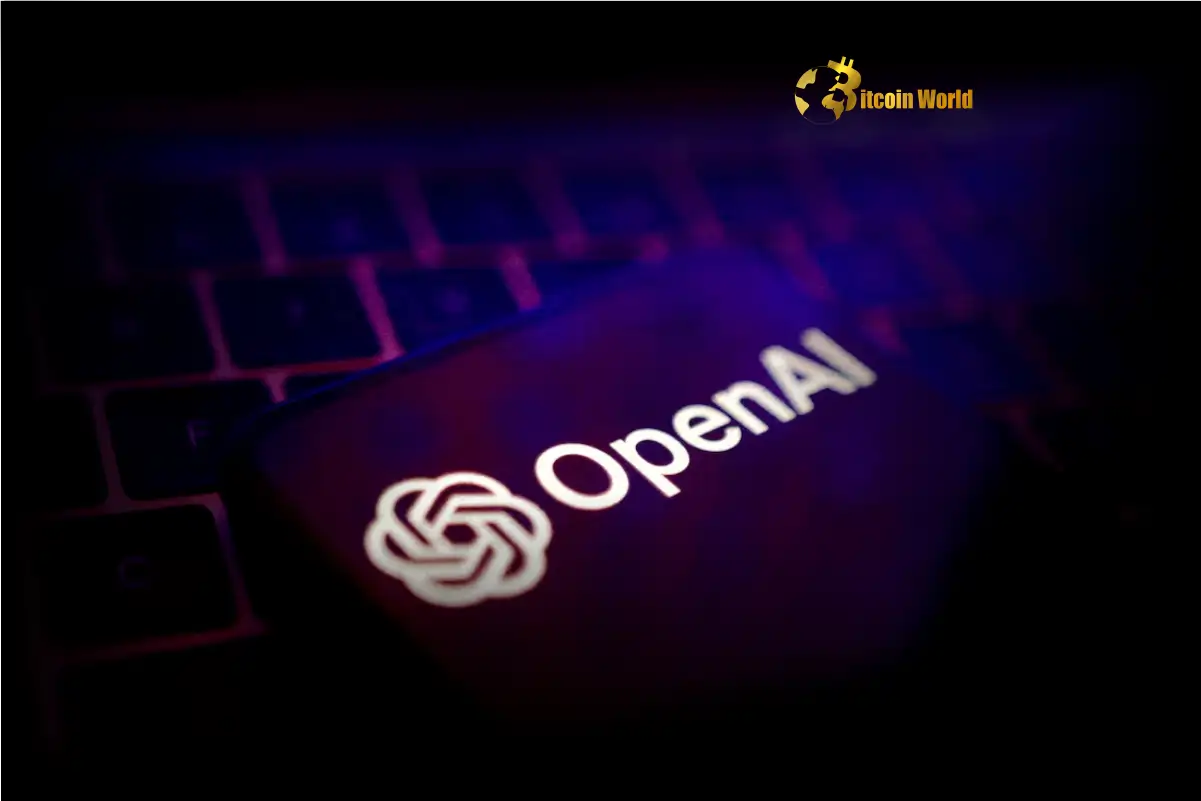In a dramatic turn of events shaking the foundations of the artificial intelligence world, a group of former OpenAI employees has thrown their weight behind Elon Musk’s lawsuit against the AI giant. This isn’t just another legal squabble; it’s a battle for the soul of AI, questioning whether altruistic missions can survive in the cutthroat world of tech profits. For crypto enthusiasts and investors closely watching the tech landscape, this lawsuit could signal significant shifts in how AI development and governance are perceived and regulated, potentially impacting blockchain applications and the future of decentralized AI.
Why are Ex-OpenAI Staffers Taking a Stand?
Twelve former OpenAI employees have formally submitted an amicus brief, essentially a ‘friend of the court’ filing, supporting Elon Musk’s claims. Their core argument? That OpenAI’s proposed shift from a non-profit ethos to a fully for-profit transition fundamentally betrays its original mission. These aren’t just disgruntled ex-employees; they are individuals who were deeply invested in OpenAI’s initial vision. Let’s break down their key concerns:
- Mission Betrayal: The brief argues that converting the non-profit arm’s controlling stake in OpenAI would directly violate the organization’s founding principles.
- Breach of Trust: They claim this restructuring would break the trust with employees, donors, and stakeholders who believed in OpenAI’s non-profit commitments.
- Safety Concerns: The ex-staffers worry that a for-profit OpenAI might prioritize financial gains over AI safety and responsible development.
These concerns echo sentiments voiced by some of these individuals previously. Gretchen Krueger has publicly advocated for greater accountability, while Daniel Kokotajlo and William Saunders have warned against a “reckless” race for AI dominance. Carrol Wainwright has even cautioned against trusting OpenAI’s promises of future ethical conduct. Their collective action underscores the gravity of their worries.
The Contentious History of OpenAI’s Structure
OpenAI’s organizational structure is a bit of a maze, and understanding it is crucial to grasping the current non-profit vs. for-profit transition debate. Here’s a timeline:
| Year | Event | Significance |
|---|---|---|
| 2015 | Founded as a non-profit organization. | Mission: Ensure AI benefits all humanity. |
| 2019 | Converted to a “capped-profit” model. | Retained a non-profit wing with controlling stake. |
| Present | Pushing for full Public Benefit Corporation (PBC) status. | Aiming for further restructuring towards a fully for-profit model. |
Musk’s lawsuit centers on the argument that OpenAI is abandoning its original non-profit mission. While a judge denied a preliminary injunction to halt the conversion, the case is set for a jury trial in spring 2026, indicating the legal battle is far from over.
Why Does the Non-Profit Structure Matter?
According to the ex-employees’ brief, the current structure, with a non-profit controlling the corporate arm, isn’t just an organizational quirk; it’s “crucial” and “critical” to OpenAI’s mission. They argue that this structure was deliberately designed to safeguard against purely financial motivations overshadowing the goal of beneficial AI. Here’s why they believe it’s so important:
- Mission Alignment: The non-profit governance ensures decisions are made with humanity’s benefit in mind, not just shareholder returns.
- Charter Commitments: OpenAI’s charter document outlines key principles for its mission, which were treated as binding commitments internally.
- Recruitment Tool: OpenAI used its unique governance structure to attract talent, contrasting itself with competitors like Google and Anthropic.
The brief even recounts a 2020 all-hands meeting where CEO Sam Altman allegedly emphasized the “paramount” importance of non-profit governance in prioritizing safety and societal benefits over short-term profits. This highlights the perceived internal understanding that the non-profit element was fundamental to OpenAI’s identity and purpose.
The Fear of a Fully For-Profit OpenAI
The ex-staffers warn of a dystopian scenario if OpenAI becomes fully for-profit. They suggest this could incentivize the company to cut corners on safety and concentrate powerful AI in the hands of shareholders. A key concern is the “merge and assist” clause in OpenAI’s charter. This clause pledges OpenAI to stop competing and assist any “value-aligned, safety-conscious” project that achieves Artificial General Intelligence (AGI) first. In a purely for-profit model, the brief argues, OpenAI might have little incentive to honor this commitment.
Growing Opposition to OpenAI’s Transition
The ex-OpenAI employees are not alone in their opposition. Earlier this week, a coalition of organizations, including non-profits and labor groups, petitioned the California Attorney General to block OpenAI’s for-profit transition. They accuse the company of failing to protect its charitable assets and subverting its mission of safe AI. Encode, another non-profit, echoed similar concerns in a previous amicus brief.
OpenAI, however, maintains that the for-profit transition will strengthen its non-profit arm, providing resources for “charitable initiatives” in healthcare, education, and science. They claim the non-profit will benefit from billions of dollars through its controlling stake. In a series of posts on X, OpenAI stated they are “getting ready to build the best-equipped nonprofit the world has ever seen.”
High Stakes for OpenAI
The pressure is on OpenAI to finalize its for-profit conversion by the end of this year or next. Failure to do so could jeopardize significant capital raised recently. This timeline adds urgency to the ongoing legal battles and public scrutiny. The coming months will be critical in determining the future trajectory of OpenAI and the broader landscape of AI ethics and governance.
We’ve reached out to OpenAI for comment and will update this piece if we hear back.
To learn more about the latest AI policy and regulation trends, explore our article on key developments shaping AI governance and ethical considerations.
[ad_2]
Source link






